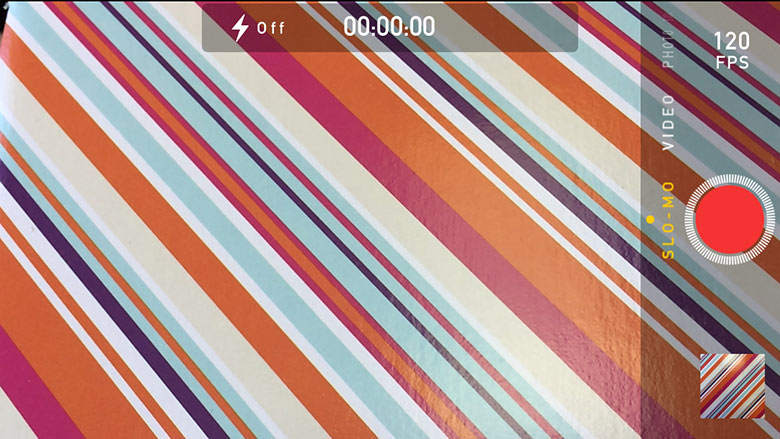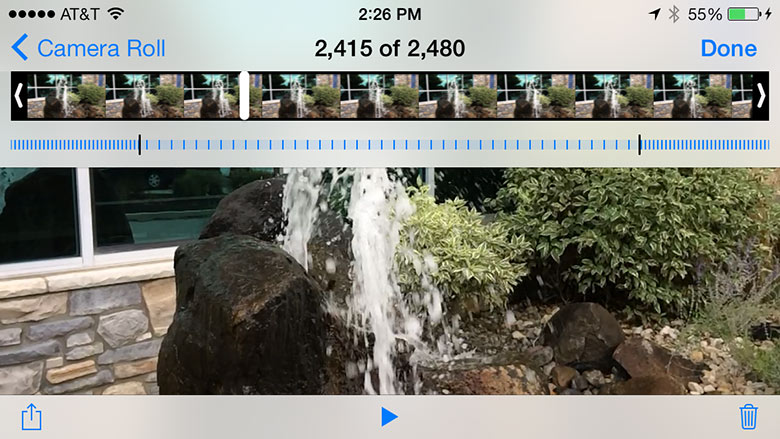iPhone 5S review: the same, yet Differentent
We got two iPhones this year. The lesser model, the 5C, is ideal for those who want an iPhone but want to save a Benjamin and have color choices beyond the typical black or white. The premium model, the 5S, is ideal for those who want the best iPhone. It’s the same as the outgoing iPhone 5, save for three areas: CPU, camera, and fingerprint security. Oh, and there’s a new gold color if you want to stand out a bit. Are such minor improvements enough to satisfy the increasingly demanding smartphone buyer? Read our full iPhone 5S review to find out!
Specs & Hardware
In terms of specs, the iPhone 5S has the same display as the 5C and the 5, though in fact we’ve found the screen brightness to be slightly, slightly less for some reason on the 5S compared to the other two devices. It’s not enough to impact usability, but it deserves a mention. The panel is a 1136×640 326PPI LCD component at 4.0″. The phone’s powered by a 1.3GHz Apple A7 64-bit CPU with a PowerVR G6430 GPU and features 1GB of RAM. There’s a separate processing element called the M7 coprocessor that effectively takes a burden off of the main CPU when it comes to measuring movement. The camera on the rear is capable of 8MP shots and 1080p video, and the camera on the front takes 1.2MP photos and 720p video. It has Bluetooth 4.0, 802.11 b/g/n, aGPS, plus an accelerometer and gyroscope. Powering everything is a battery of size 5.92 watt-hours or 1560mAh, which is 10% larger than the iPhone 5.
The only way you know it’s an iPhone 5S from the front and not a 5 is by the ring around the home button, which contains the fingerprint sensor. More on that later.
If you get the Space Gray iPhone 5S, the home button is surrounded by a black metal ring, so it doesn’t stand out as much as the gold and silver versions which have a gold and silver metal ring, respectively.
As a nice surprise, the speaker of the 5S is significantly louder and more clear than that of the iPhone 5. We’d place it second in terms of loudness only to the HTC One.
The beveled edges, one of the hallmarks of the iPhone 5/5S’s beautiful design, are still here. We hope that Apple has made changes to the aluminum on the 5S to make it more durable against scratches and nicks. Our Durability Report for the iPhone 5 was not favorable.
Software & Touch ID
You know iOS 7 by now, so we’re not going to cover it in detail. There’s no difference between the software on the iPhone 5/5C and the iPhone 5S except two things: the camera app, which now has slow-motion and burst capture (shown in more detail below), and Touch ID, which we’ll cover now.
Touch ID is a great example of Apple taking a feature that has existed before in relatively poor execution (think Motorola Atrix) and doing it right. We say “right” because Touch ID works so quickly in recognizing your print that it’s almost faster than sliding to unlock your phone. When you’re unlocking your phone, for example, you press the home button to wake the phone, rest your finger on the home button for about 3/4 of a second, and your icons fly in. That’s it.
You set it up through Settings>General>Passcode & Fingerprint. You cannot use Touch ID without a PIN. Once you set that up, the phone asks you to touch the fingerprint sensor multiple times. Setting up a finger takes a minute, and you can have up to five fingers stored on the phone, whether your own or your spouses, etc. Because the Touch ID data is stored on the phone and not the cloud, if you get a new phone you’ll have to set up your fingerprints again.
The problem with Touch ID is that its use is limited to 1) unlocking your phone and 2) buying apps from the app store. It doesn’t work in the Apple store app, Find my Friends (again, an Apple-made app), or any third party apps. It would be terrific to use Touch ID instead of entering a password for banking apps, website passwords, and more.
Ultimately, Touch ID is going to be a godsend for people that use a PIN on their phone or are required to do so for work. It saves seconds and also feels pretty futuristic in use.
Camera
We’ve been impressed by the iPhone’s camera with each passing generation. Resulting photos are often well balanced, free of noise, and just really nice whether viewed from a phone display or zoomed in to reveal detail on a high resolution PC monitor. But there was always one area where the iPhone’s camera was trumped, especially this year: low light performance. So in response, Apple has increase the sensor size and given the 5S’s lens an aperture of f/2.2. Along with that, it added a second amber flash in an attempt to reduce instances of bright-white photos taken with an overzealous flash. The claim is that this dual-tone flash (or, True Tone, as Apple has branded it), can fire in 1000 different combinations depending on ambient light conditions to help match the color temperature and make the flash look more natural. Below we’ll look at whether this makes a difference in practice.
Also new to the camera are some software features. The iPhone 5S has 120fps slow-motion mode, as well as a burst-shot mode that can help you get a perfect picture in high action shooting situations. Both burst shot and slow-motion mode are not new to smartphones in general, we should add, so this is a bit of playing catch up.
But in typical Apple style, the implementation of these features are particularly well-done and fun to use. Like with slow-motion video (which only records in 720p), you can specify which part of the video is in slow-motion by sliding the bars, as seen above.
And here’s some sample video taken with the 5S with the slow-motion feature. Getting the slow-motion video off your camera is odd. You can iMessage it, transfer it to iMovie on a mac, email it, or upload it to YouTube. Using file manager won’t maintain the 120FPS.
And with burst shooting, you can enter this Favorites picker where the phone can (rather poorly) try to determine the best photo, or you can pick the ones you like and discard the rest. This is great for action shots.
Above you’ll find some sample daylight shots taken with the iPhone 5S. Overall the photos came out spectacularly with proper color saturation, minimal noise, and excellent contrast.
And here are a bunch of low-light photos snapped with the iPhone 5S. Images on the left within each set was snapped with flash, and the one on the right with no flash. While the camera does indeed do pretty well with low light, it’s not as good compared to the HTC One or Nokia Lumia 1020. Also, the True Tone flash didn’t make a huge difference in avoiding bright white shots, but it did help a bit.
Performance
Apple claims that the 5S, with its 64-bit (capable) A7 CPU is twice as fast as its predecessor. Apple also claims that it’s 40x faster than the original iPhone, but we find it a bit ridiculous to compare any piece of technology to one that existed six years ago. The 5S also support OpenGL ES 3.0 (like Android 4.3) which gives game developers a better shot at making a console-quality game in terms of graphics. The A7 is a 28nm chip (versus 32nm on the iPhone 5′s A6) which means that it’s more power efficient. It’s a dual-core 1.2GHz CPU that comes with 1GB DDR3 RAM, versus 1GB DDR2 RAM from the iPhone 5.
By our count, just two apps have been updated to work with the 64-bit architecture: Infinity Blade III and djay 2. Both offer incredible graphics and super smooth performance. We can’t imagine a world in which apps like Facebook and Instagram are upgraded for the A7 CPU and the resulting improvement in performance is huge, but it’ll be interesting to see more game developers upgrade their apps, because that’s where the real improvements happen.
Day to day performance is exactly one beat faster (can you quantify a beat?) than the iPhone 5. You can really see this in our iPhone 5S vs iPhone 5 comparison. That means that generally apps will open slightly faster, games load a bit faster, and web pages appear with less hesitation. Does this really contribute to the experience? Not really. It’s indeed better, but marginally.
In terms of network performance, we got typical LTE speeds over AT&T’s network with download speeds averaging in the 20-30Mbps range with bursts to near 50Mbps, while upload speeds averaged 8-12Mbps with bursts into the high teens. WiFi performance was also good, though we wish the iPhone 5S supported the latest 802.11ac standard.
Battery Life
The 5.92 watt-hours/1560mAh embedded battery is small by today’s standards, but for a device of this size with the power-savings of the M7 coprocessor and 28nm A7 CPU, that amount of juice goes a long way. With moderate usage, including many email checks, several calls, a FaceTime call or two, and some gaming and web browsing, expect to go 13-14 hours before needing a charge. And to go from 0-100% charge, you’ll be looking at about two hours. This is still above average in the world of smartphones, so that even if you’re running low on juice, a 10 minute charge will give you about 10% of battery.
Pros
+ Hardware is still fantastic: thin, light, and very high quality
+ Excellent performance
+ Still one of the best cameras
+ Camera software enhancements–burst shot and slow-motion–are fun
+ Speaker, now better, is still one of the loudest
+ All-day battery life
+ Touch ID scanner works very well, is convenient
+ Excellent performance
+ Still one of the best cameras
+ Camera software enhancements–burst shot and slow-motion–are fun
+ Speaker, now better, is still one of the loudest
+ All-day battery life
+ Touch ID scanner works very well, is convenient
Cons
- Feels outdated in the face of competition
- Touch ID usage is limited
- Dual-tone flash doesn’t help much
- No 802.11ac support
- Touch ID usage is limited
- Dual-tone flash doesn’t help much
- No 802.11ac support
Pricing and Availability
You can buy an iPhone 5S on all major carriers in the US and most major carriers around the world. And of course, you can buy direct from Apple. The on-contract price starts at $199 for 16GB of storage, then goes to $299 for 32GB, and $399 for 64GB. The off-contract prices are up there at $649, $749, and $849, respectively.
Conclusion
The iPhone 5S looks and feels a bit dated compared to other flagship devices on the market: we now have 1080p displays as standard, generous screen sizes that make viewing video and gaming more immersive, and even device with pen-input that take productivity to a whole new level. But with these tradeoffs, the iPhone 5S gives you a highly pocketable device that offers terrific one-handed usability. The iPhone is for a different type of user, and “that” user is going to love the 5S.
Those of you with an iPhone 5 shouldn’t feel compelled to upgrade to the 5S unless you value better low-light camera performance, or if you want to skip your PIN lock and use your thumb print instead. Otherwise, there’s not much that’s new here. Alas, the iPhone 5S will endure as a top-three smartphone for many months to come because everything it does it does well. And for many, that’s a really good thing.











































.jpg)

0 comments:
Post a Comment